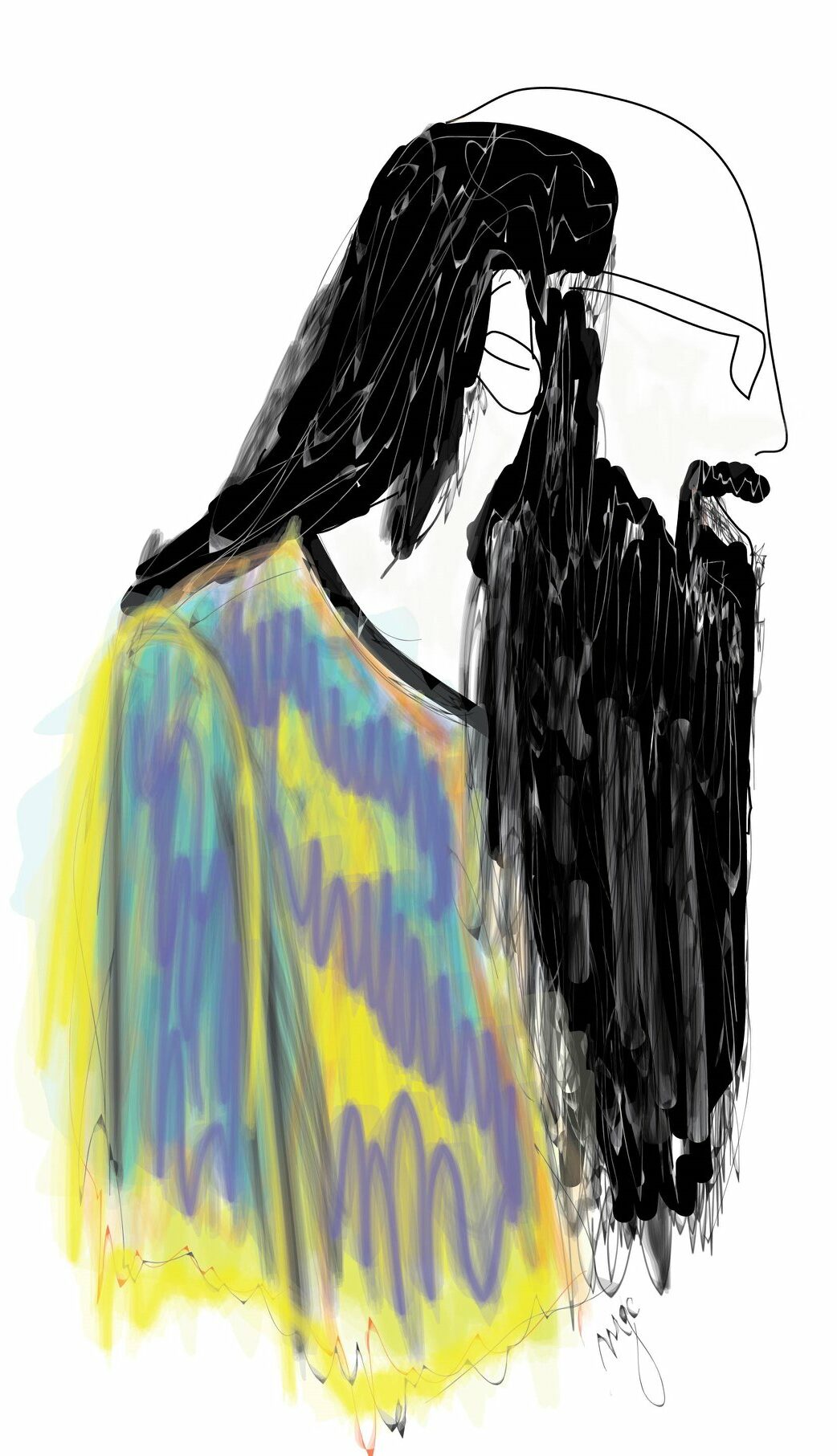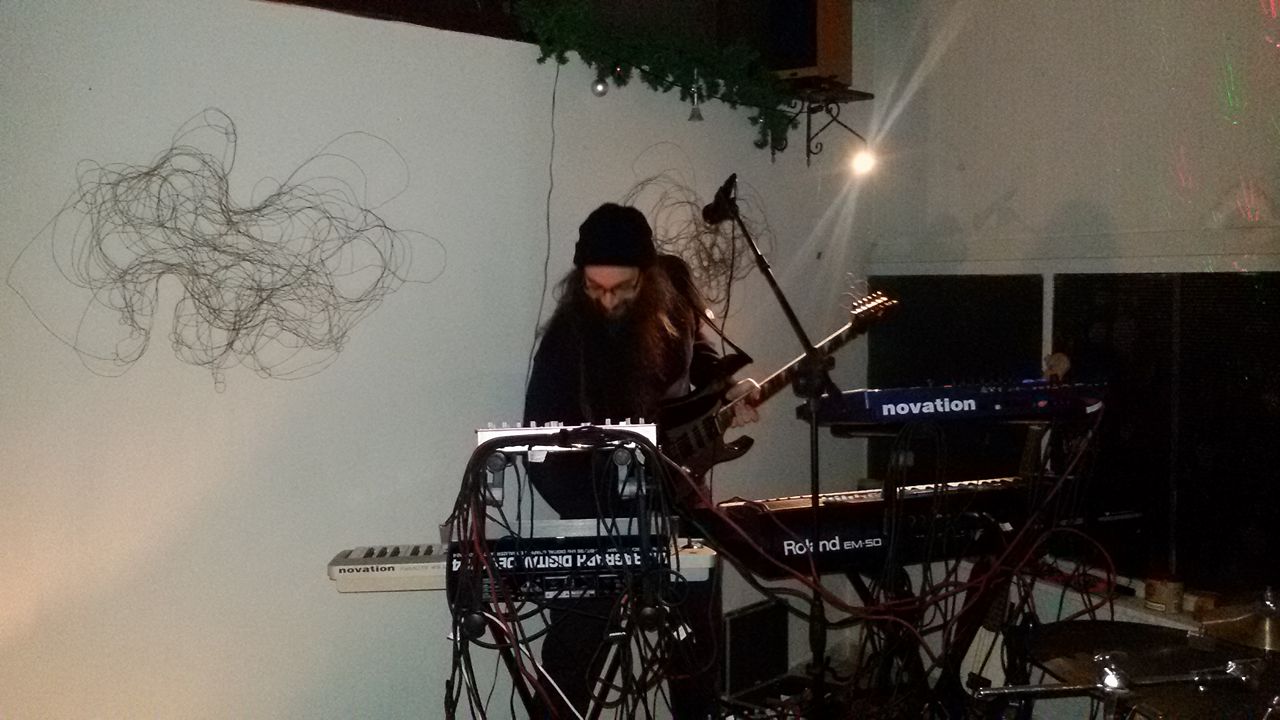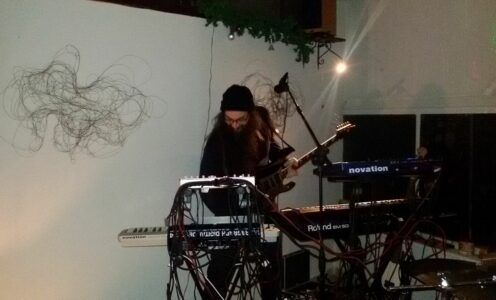Musica
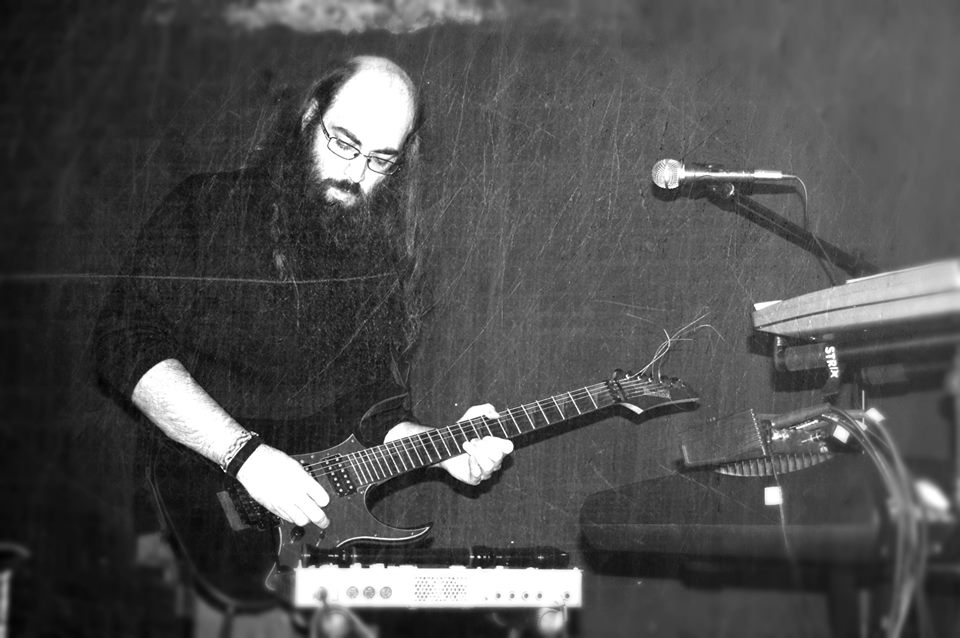
“Stefania”
contributo audio per “RadioQuestaSera”
06/04/2024
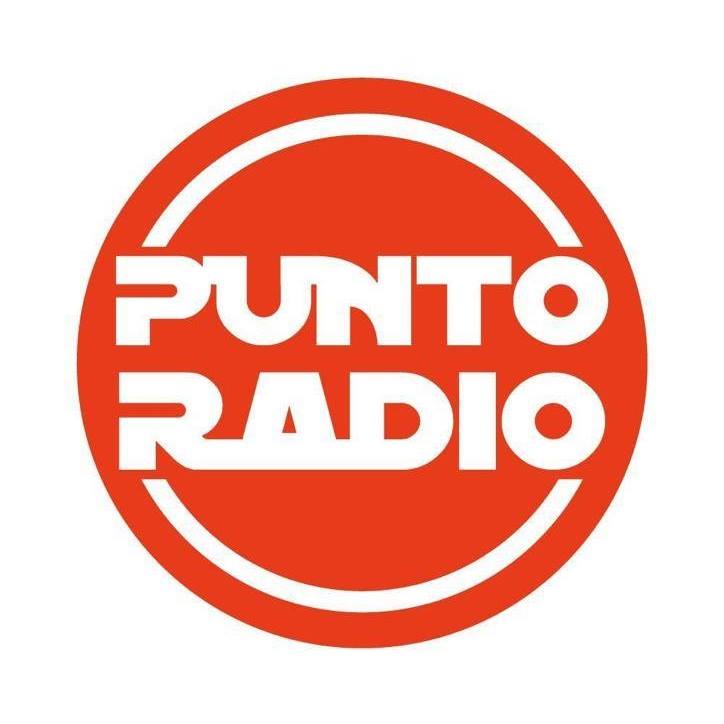
–
PROFESSORI SOGNARE
From Anarchy to Alchemy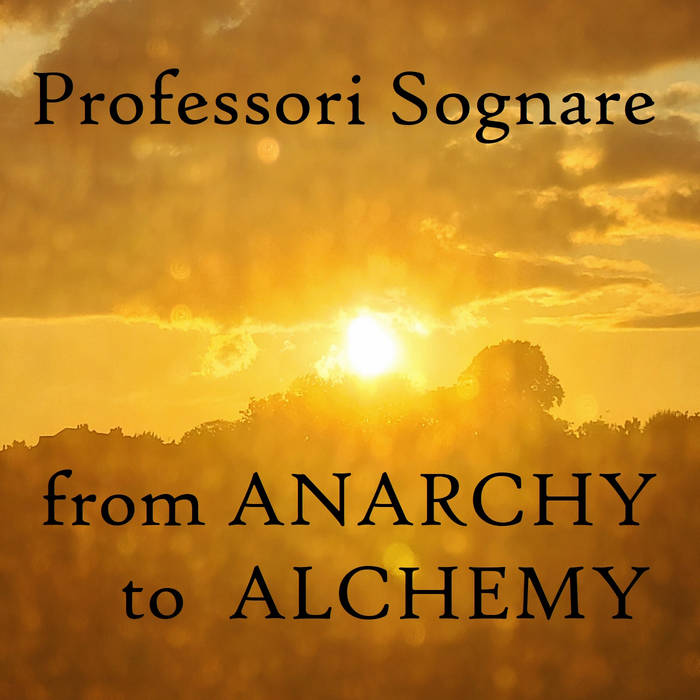
on bandcamp
out: 19/12/2023
Simmonds, Wilding, Santabarbara, Carrese
PROFESSORI SOGNARE
Lo-Fi Living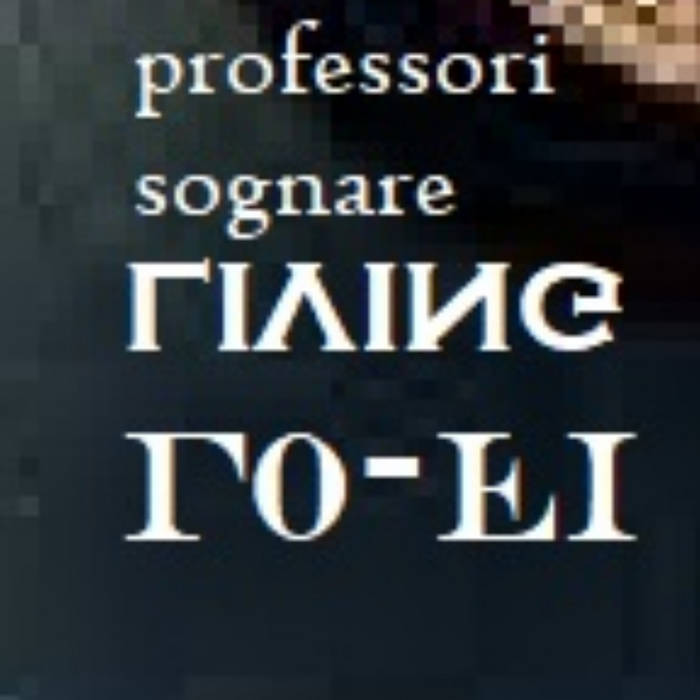
on bandcamp
out: 19/12/2023
Simmonds, Wilding, Santabarbara, Carrese
PROFESSORI SOGNARE
The Great Unmanifest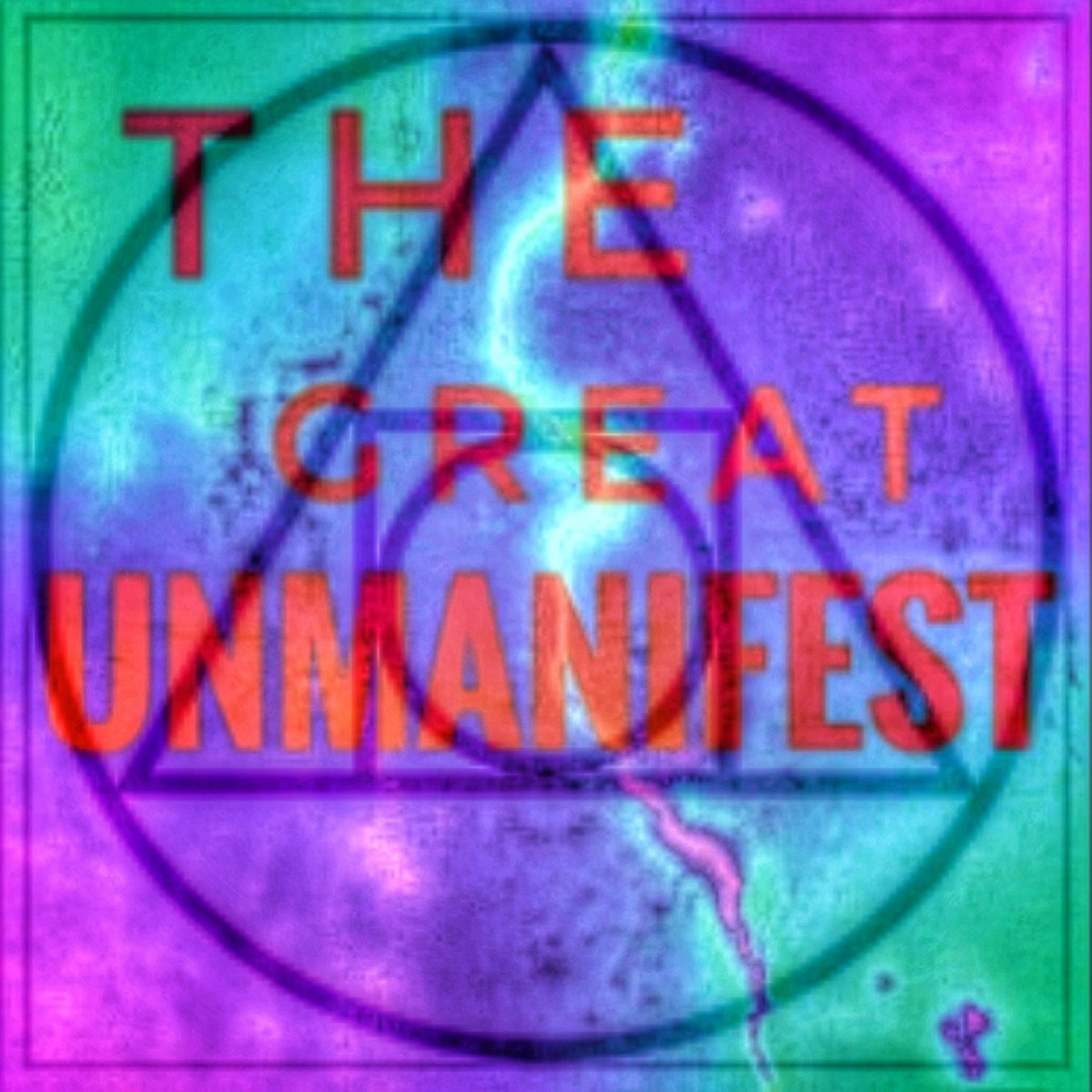
on bandcamp
out: 11/07/2023
Simmonds, Wilding, Santabarbara, Carrese
**
PROFESSORI SOGNARE
Random Synchronicity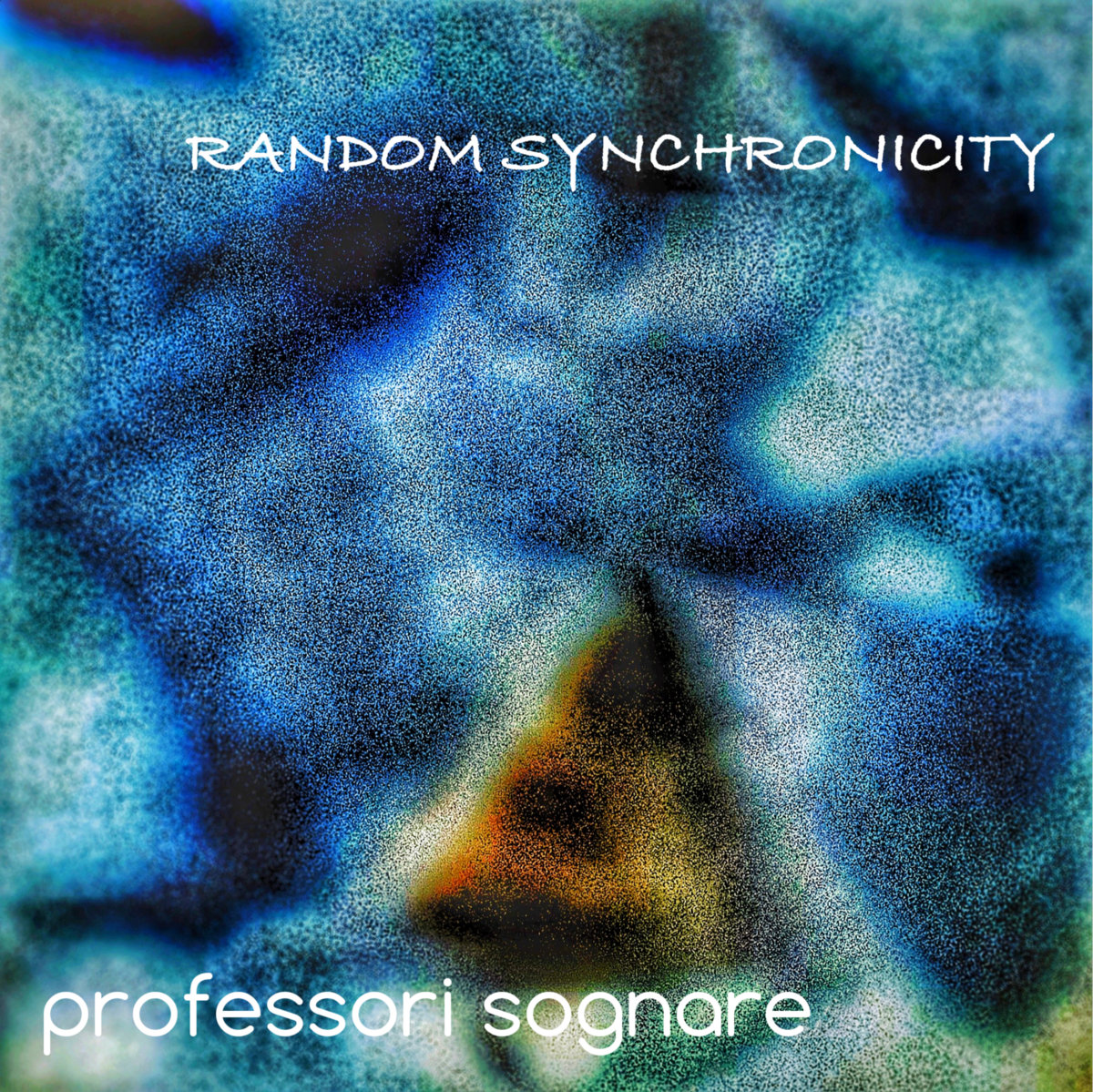
on bandcamp
out: 08/12/2022
Simmonds, Wilding, Carrese
**
PROFESSORI SOGNARE
Monsters of the Deep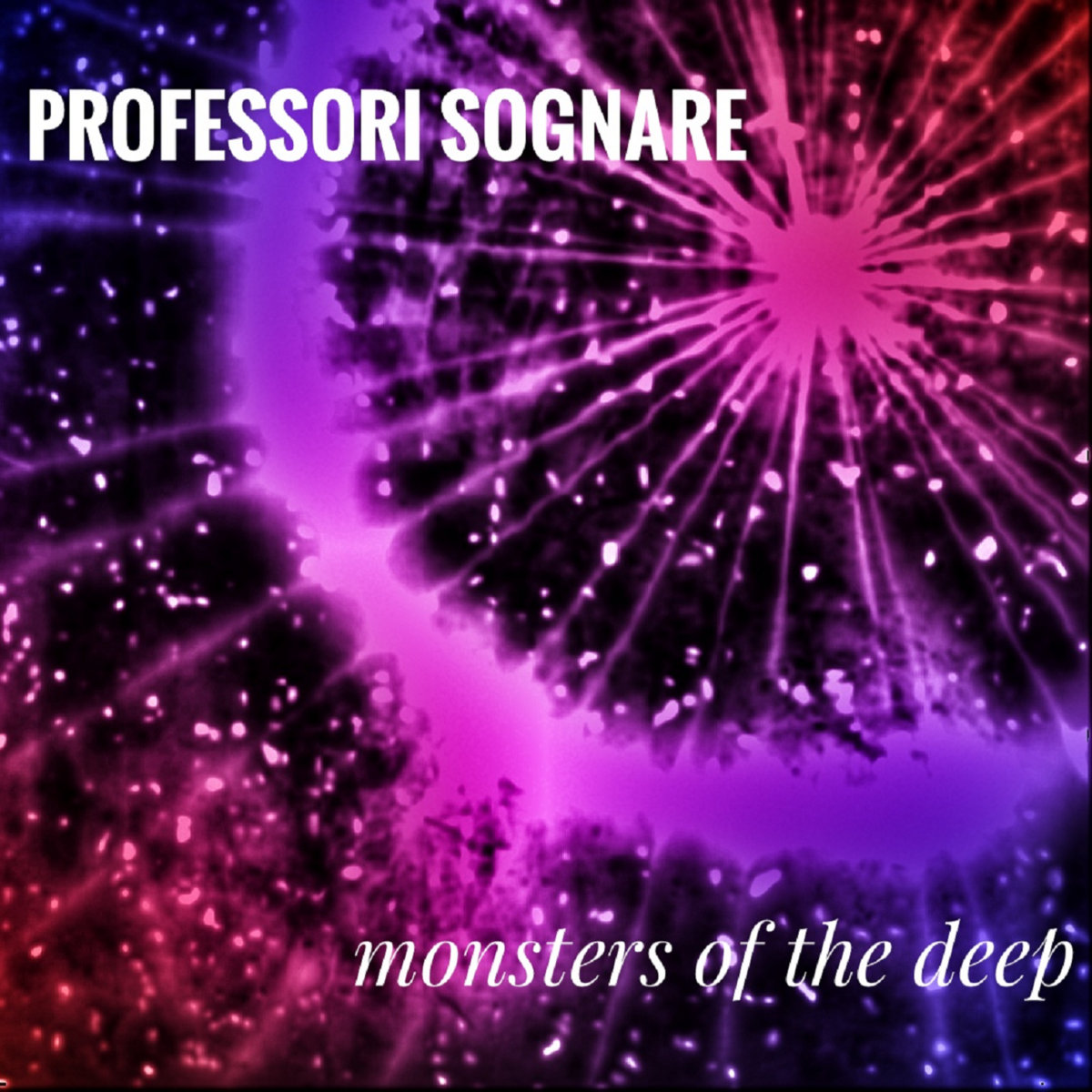

on bandcamp
out: 11/07/2022
Guitar: Little Willi
Keyboards & Ambient sounds: The Curmudgeonly Wazzok
Bass guitar & additional ambient sounds: Arrythmic Dissonance
Lapharp: Stuart Wilding
Piano: The Curmudgeonly Wazzok
Guitar and bird fx: Little Willi
Bass guitar: Arrythmic Dissonance
Voice: The Curmudgeonly Wazzok
Synth fx: Zino Symons
Piano: Zino Symons
Percussion etc: Zino Symons—-
KAMCHATKA
impro live with DNA (Daniela Allocca) and
Curmudgeonly Wazzocks (Massimo Gerardo Carrese)
ON YOUTUBE click here
(extract)
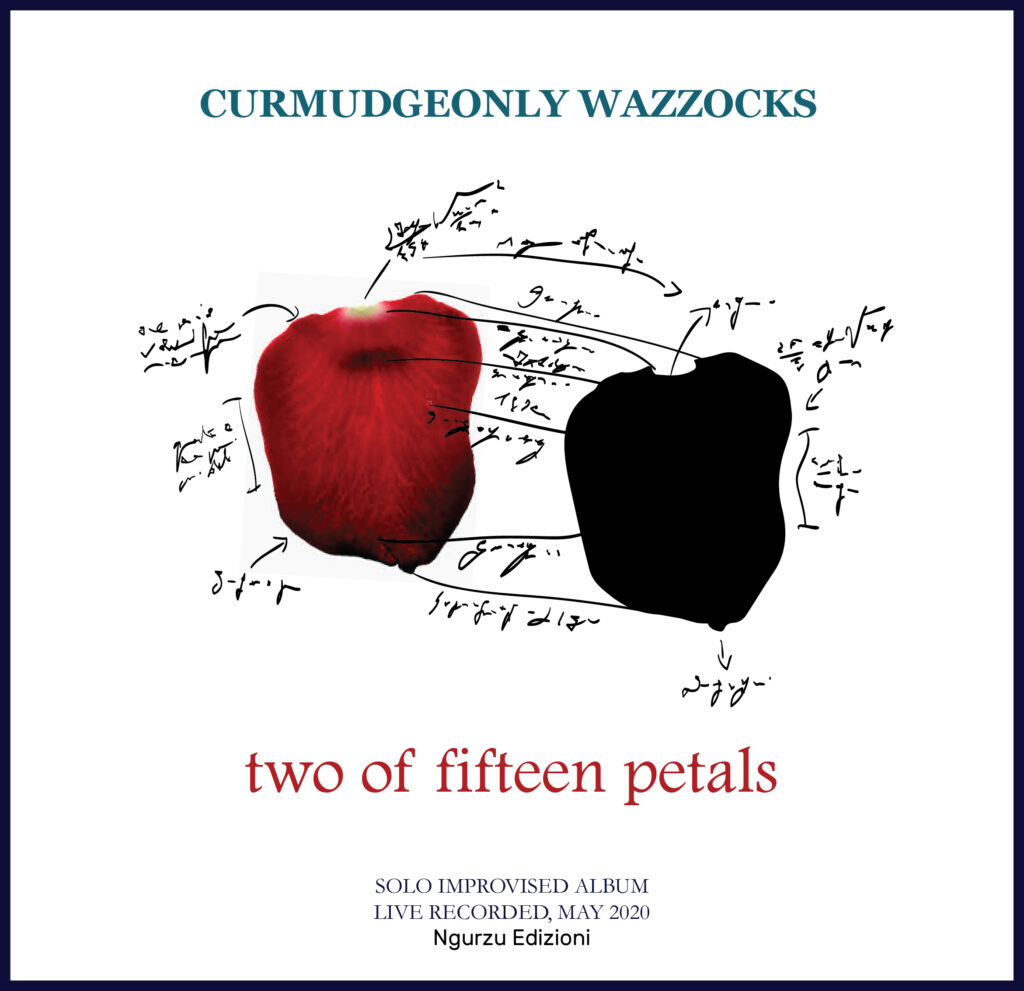
TWO OF FIFTEEN PETALS (on youtube)
è un album dedicato all’errore compositivo e all’impossibilità di riprodurlo fedelmente. A differenza di una composizione ben scritta e suonata, l’errore è quasi sempre non riproducibile nella sua essenza e dunque è una estrema particolarità della composizione musicale. Il musicista qui esplora l’errore improvvisando con diversi strumenti e con la voce. Il fatto che né gli strumenti né la voce siano sempre intonati (con differenze tra tempi e ritmi) è intenzionale proprio per esplorare l’errore non nelle sue forme più complesse ma per iniziare ad approfondirne alcune caratteristiche. Tema dell’album è concentrarsi sull’errore musicale e chiedersi se possa essere riprodotto fedelmente così come possiamo fare con una ordinaria composizione musicale.
It’s an album dedicated to compositional error and the impossibility of reproducing it faithfully. Unlike a well-written and played composition, the error is almost always non-reproducible in its essence and is therefore an extreme peculiarity of musical composition. Here the musician explores the error by improvising with different instruments and with the voice. The fact that neither the instruments nor the voice are in tune (with differences in tempo and rhythm) is intentional, precisely in order to explore the error not in its most complex forms, but to begin to deepen some of its characteristics. The theme of the album is to focus on the musical error and to ask whether the error can be reproduced as faithfully as we can do with an ordinary musical composition.
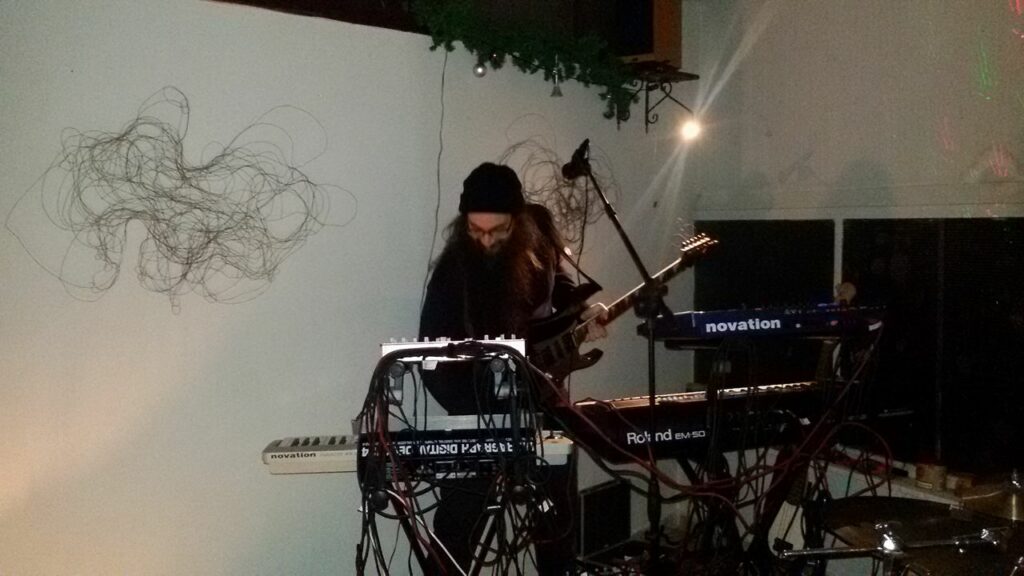
bands
Bi-Bon-Wazzocks
Lino Barbiero (Bibonzo), batterista e pompiere, e Massimo Gerardo Carrese (Curmudgeonly Wazzocks), polistrumentista, studioso di fantasiologia, si sono incontrati nel 1998. Dopo anni di sperimentazione in vari progetti musicali, nel 2013 hanno dato vita al duo Bi-Bon-Wazzocks, che propone un’improvvisazione psichedelica sperimentale. Influenzati da space rock, sonorità orientali e progressive, i due musicisti creano composizioni improvvisate dal vivo, uniche e irripetibili.
Tra le loro registrazioni live, ricordiamo quella del febbraio 2013 quando si esibirono a Roma in 40 minuti no stop di improvvisazione (che si può ascoltare qui).
Il gruppo non è più in attività.
Lino Barbiero (Bibonzo), a drummer and fireman, and Massimo Gerardo Carrese (Curmudgeonly Wazzocks), a multi-instrumentalist and fantasiologist, met in 1998. After years of experimentation in various musical projects, they formed the duo Bi-Bon-Wazzocks in 2013, offering experimental psychedelic improvisation. Influenced by space rock, oriental and progressive sounds, the two musicians create unique and unrepeatable improvised live compositions.
Their live recordings include one in February 2013 when they performed 40 minutes of non-stop improvisation in Rome (here).
The group is no longer active.
Curmudgeonly Wazzocks
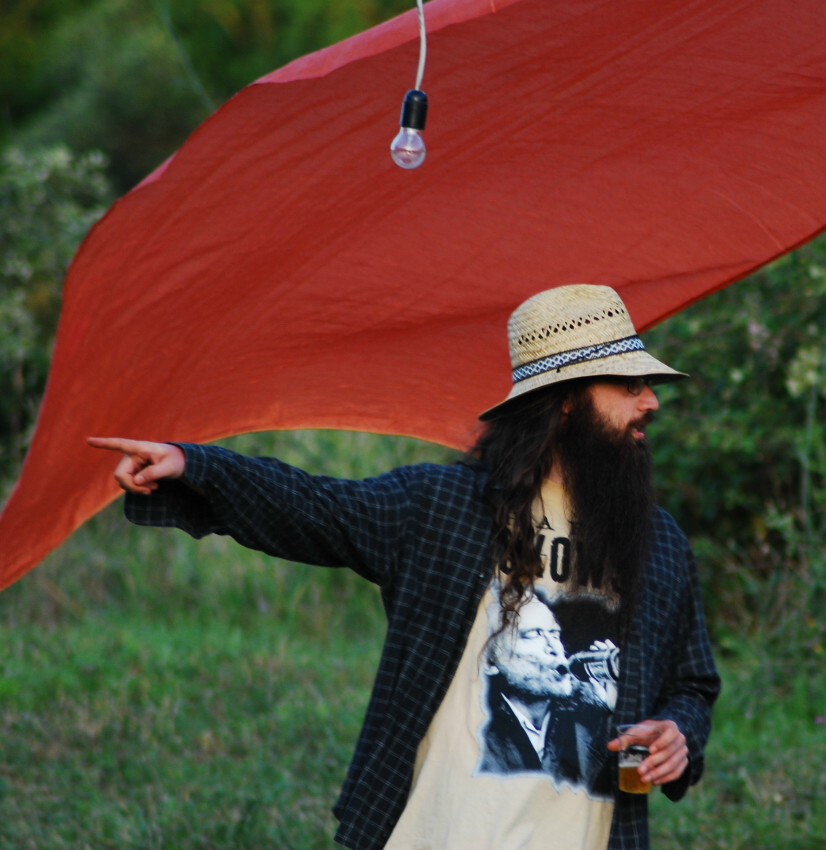
Massimo Gerardo Carrese aka Curmudgeonly Wazzocks inizia a suonare nel 1994, da autodidatta. Forma diverse band e sperimenta vari generi (jazz, death & thrash metal, blues, rock, grunge…) e strumenti (chitarra, basso, synth, flauto, pianoforte). Dal 1998 si dedica alla psichedelia sperimentale, collaborando con gruppi come The Most e Trialogo. Dal 2010 al 2012 crea e sperimenta suoni immaginando live in luoghi del Mondo: frammenti di sue immaginazioni musicali sono pubblicati su youtube (vedi qui). Dal 2016 è solista.
Massimo Gerardo Carrese aka Curmudgeonly Wazzocks started playing in 1994, self-taught. He formed several bands and experimented with different genres (jazz, death & thrash metal, blues, rock, grunge…) and instruments (guitar, bass, synth, flute, piano). Since 1998, he has dedicated himself to experimental psychedelia, collaborating with groups such as The Most (Lino Barbiero, Lol Simmonds, Raffaele Santabarbara) and Trialogo (Lino Barbiero, Lol Simmonds). From 2010 to 2012 he created and experimented with sounds imagining “live” in places around the world: fragments of his musical imaginings are published on youtube (here). Since 2016 he is a solo performer.
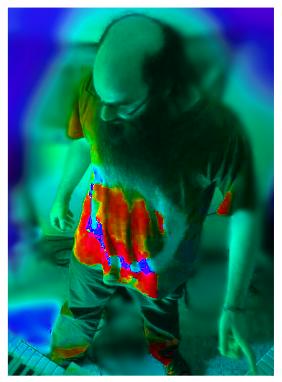
The Most
Nel 1998 con Lino Barbiero (batteria) e Lol Simmonds (basso ed effetti) dà vita ai The Most (psychedelic rock space jazz) a cui si aggiunge Raffaele Santabarbara (sax, clarinetto, tastiere, effetti). Inizia così un percorso musicale dedicato all’improvvisazione e a lunghe registrazioni (su minidisc e nastro) che il gruppo distribuisce tra amici. Dei molti lavori autoprodotti Curmudgeonly Wazzocks (registrato su nastro, anno 2000) è in assoluto quello che riceve più consensi anche da parte di gruppi come Ozric Tentacles e Gong. Curmudgeonly Wazzocks diventerà lo pseudonimo di Massimo Gerardo Carrese, ideato da Lol. Nel 2001 il gruppo registra Wayang che da subito ottiene visibilità su riviste musicali nazionali ed estere (es. The Most in “Fun House” Rivista Italiana N. 3, settembre / ottobre 2001; The Review a cura di Progresy Tripody, Slovenia 2001) e passaggi in trasmissioni radiofoniche perlopiù straniere (es. The Most on Supanova Radio – Great Britain, a cura di Stream Show, Londra 2001 e 2002).
In 1998, together with Lino Barbiero (drums) and Lol Simmonds (bass and effects), he formed in Italy The Most (psychedelic rock space jazz), joined by Raffaele Santabarbara (saxophone, clarinet, keyboards, effects). Thus began a musical journey dedicated to improvisation and long recordings (on minidisc and tape) that the group distributed to friends. Of the many self-produced works, Curmudgeonly Wazzocks (recorded on tape in 2000) is by far the one that has received the most acclaim, even from groups such as Ozric Tentacles and Gong. Curmudgeonly Wazzocks becomes the pseudonym of Massimo Gerardo Carrese, invented by Lol. In 2001 the group recorded Wayang, which immediately gained visibility in Italy and foreign music magazines (e.g. The Most in ‘Fun House’ Italian Magazine No. 3, September/October 2001; The Review edited by Progresy Tripody, Slovenia 2001) and passages in mostly foreign radio broadcasts (e.g. The Most on Supanova Radio – Great Britain, edited by Stream Show, London 2001 and 2002).
–
Trialogo è formato da Lino Barbiero, Lol Simmonds, Massimo Gerardo Carrese. I tre registrano due album The zone of next development (2003) e Live Stendec (2004) che confermano la vena strumentale e psichedelica del gruppo.
Dopo anni di inattività, il gruppo si è rincontrato in una jam session nel 2024.
Trialogo was formed by Lino Barbiero, Lol Simmonds and Massimo Gerardo Carrese. They recorded two albums, The zone of next development (2003) and Live Stendec (2004), which confirmed the group’s instrumental and psychedelic vein.
After years of inactivity, the group met again in a jam session in 2024.
Nel 2006 Curmudgeonly Wazzocks segue progetti solisti. Registra Unique – opera prima per pianoforte a coda (2006), improvvisazione in studio (suona senza poter sentire, volontariamente, lo strumento) – e Helandroscope (2006) di tono decisamente psichedelico – sperimentale. Molte sono di questo periodo le ricerche musicali: dalla chitarra accordata secondo particolari strutture armoniche al suo gioco fantasiologico Nuance: da tre elementi – lettere e parole, una formula matematica, elementi dettati dal caso – si generano armoniche sequenze di note da disporre sulle linee del tabulato.
Solo perfomer
In 2006, Curmudgeonly Wazzocks pursued solo projects. He recorded Unique – first work for grand piano (2006), a studio improvisation (he plays without being able to hear the instrument, voluntarily) – and Helandroscope (2006) with a decidedly psychedelic-experimental tone. Many musical researches are from this period: from the guitar tuned according to specific harmonic structures to his imaginative game Nuance: three elements – letters and words, a mathematical formula, elements dictated by chance – generate harmonic sequences of notes to be arranged for tablature.
Traders
Il gruppo nasce nel luglio 2005 quando Sergio Albano (chitarra), Massimo Gerardo Carrese (inizialmente chitarra, poi basso) e Lino Barbiero (batteria) suonano al Meeting Copyleft Music a Bologna. Dal 2006 al 2010 lavorano alla loro musica registrando pezzi e suonando dal vivo.
Pubblicano “Frogs” (qui), in Piano Sequenza, retrospettiva di musica a Napoli negli anni ’00 a cura di KorovaMilkBar e del Tpa arkfotolab, 2010.
The group was formed in July 2005 when Sergio Albano (guitar), Massimo Gerardo Carrese (first guitar, then bass) and Lino Barbiero (drums) played at the Copyleft Music Meeting in Bologna. From 2006 to 2010 they worked on their music, recording and playing live.
They published ‘Frogs’ (here) in Piano Sequenza, a retrospective of music in Naples in the 00s, edited by KorovaMilkBar and Tpa arkfotolab, 2010.
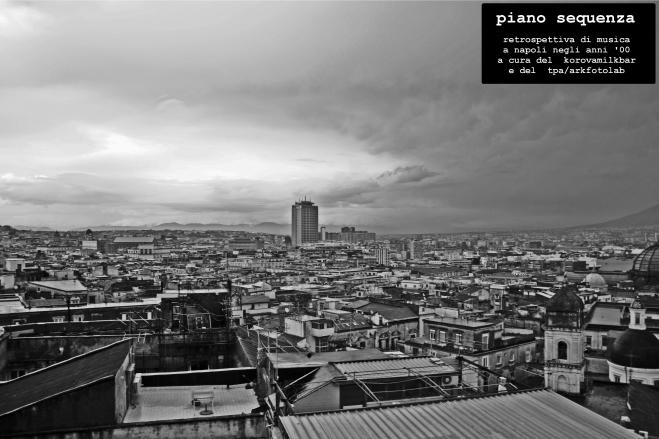
Vai a TUTTE LE PUBBLICAZIONI
